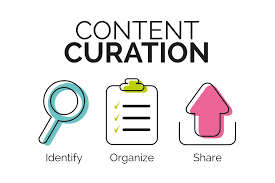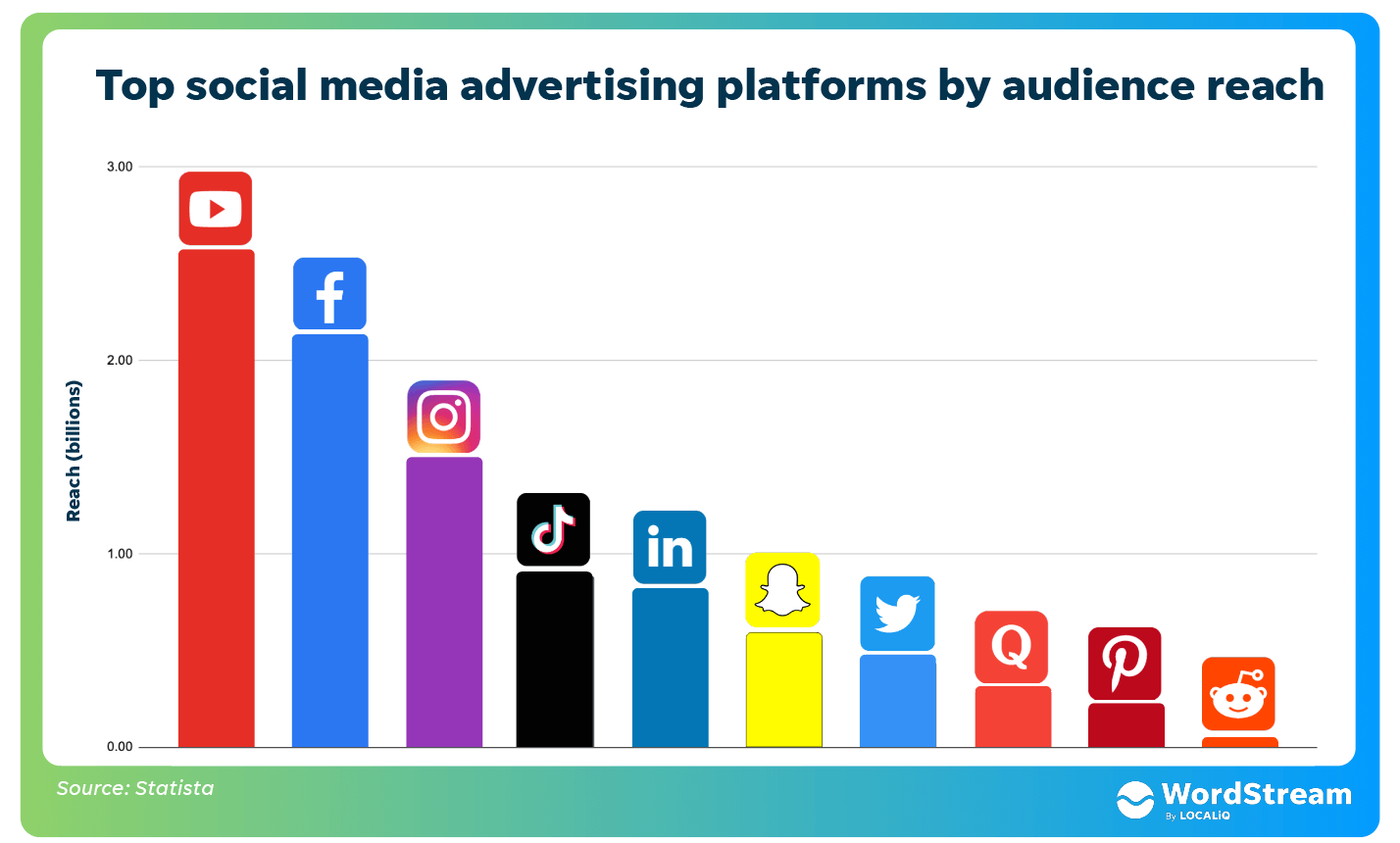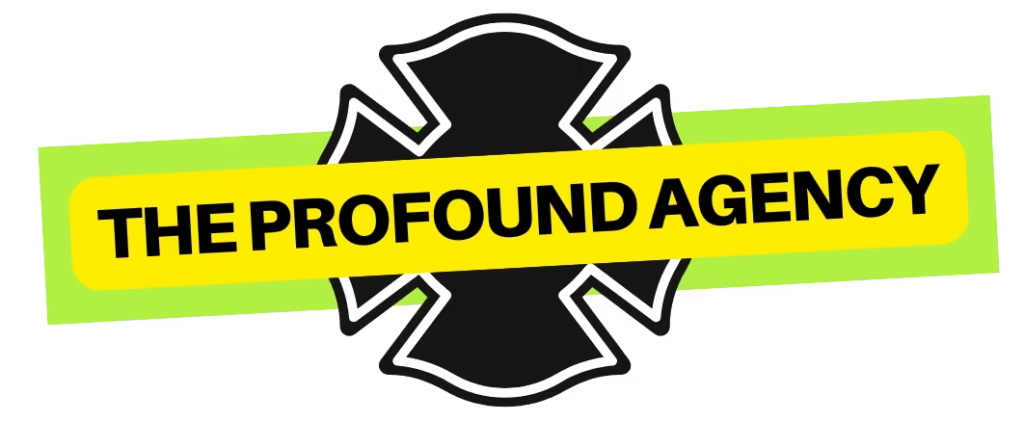Digital media placement has revolutionized the way businesses and individuals communicate with their target audiences. With the rapid advancements in technology and the widespread use of the internet, traditional media channels are no longer the sole means of reaching and engaging with audiences. In this article, we will explore the evolving landscape of digital media placement, highlighting the key differences between traditional and digital media and discussing the latest trends and advancements that have shaped this dynamic field. Traditional Media vs. Digital Media: Traditional media, such as newspapers, magazines, radio, and television, has long been the primary source of news and entertainment. However, the rise of digital media has disrupted the traditional media landscape. Digital media encompasses a wide range of platforms, including websites, blogs, social media networks, podcasts, online video streaming services, and more. Unlike traditional media, digital media offers immediate and interactive communication channels that allow for real-time engagement, targeted messaging, and personalized content delivery. Trends and Advancements in Digital Media Placement: Social Media Dominance: Social media platforms have emerged as influential channels for story telling. Facebook, Instagram, Twitter, LinkedIn, and YouTube offer businesses and individuals the opportunity to connect directly with their target audiences, share content, build communities, and drive engagement. The rise of social media influencers has also revolutionized brand placement by providing brands with opportunities for authentic partnerships and endorsements. Native Advertising: Native advertising seamlessly integrates sponsored content within the user’s natural online experience. It matches the form and function of the platform where it is placed, providing a less disruptive and more engaging advertising experience. Native advertising has gained popularity due to its ability to bypass ad-blocking software and deliver relevant and targeted content to consumers. Programmatic Advertising: Programmatic advertising automates the process of buying and selling ad inventory through artificial intelligence and real-time bidding. It allows advertisers to reach their target audience with precision and efficiency, optimizing ad placements based on data and analytics. Programmatic advertising offers scalability, cost-effectiveness, and the ability to deliver personalized messages at scale. Influencer Marketing: Influencer marketing leverages the influence and reach of individuals who have a dedicated following on social media platforms. Brands collaborate with influencers to create sponsored content that resonates with their target audience. This form of digital media placement enables businesses to tap into the credibility and trust built by influencers, effectively reaching and engaging with niche communities. Interactive Content: Content, such as quizzes, polls, contests, and interactive videos, enhances user engagement and provides a personalized experience. Interactive content captures attention, encourages participation, and fosters a deeper connection with the audience. By incorporating interactive elements into their digital media placements, businesses can increase brand awareness and drive conversions. The landscape of media placement is constantly evolving. This offers businesses and individuals new and exciting opportunities to connect with their target audiences. The shift in media has democratized content distribution. It’s provided a level playing field for brands of all sizes. Understanding the key differences between traditional and digital media is crucial for successful placement strategies. By embracing this strategy, businesses can maximize their reach, and engagement, and ultimately achieve their communication and marketing objectives. View a list of our Publications: https://press.theprofound.agency Visit our Home Page: https://theprofound.agency
Identifying Target Audiences for Digital Media Placement
In the world of digital media placement, reaching the right audience is paramount for successful communication and engagement. Identifying and understanding your target audience is the foundation of any effective digital media strategy. In this article, we will delve into the importance of defining target demographics and psychographics, as well as conducting market research and audience analysis to identify and reach the right audience for your digital media placements. Defining Target Demographics: Demographic information provides key insights into the characteristics of your target audience. Factors such as age, gender, location, income level, education, and occupation play a significant role in shaping consumer behavior and preferences. Understanding these demographics allows you to tailor your digital media placements to resonate with your desired audience. Demographic data can be gathered through market research surveys, customer databases, and analytics tools. Understanding Psychographics & Digital Media: Psychographics delves deeper into the psychological and behavioral aspects of your target audience. It involves examining their attitudes, values, interests, lifestyles, and motivations. Psychographic information helps create a more nuanced picture of your audience, allowing you to connect with them on a deeper level. This information can be gathered through customer interviews, social listening, online surveys, and audience segmentation techniques. Conducting Market Research for Digital Media: Market research is a crucial step in identifying and understanding your target audience. It involves gathering data about your industry, competitors, and consumer preferences. Market research methods include surveys, focus groups, interviews, and online research tools. By analyzing market trends, consumer needs, and competitor strategies, you gain valuable insights that inform your digital media placement decisions. Audience Analysis: Analyzing your existing audience is essential for refining your placement strategy. Use web analytics tools to understand who is visiting your website, engaging with your social media content, and consuming your digital media. These tools provide valuable data such as demographics, user behavior, interests, and traffic sources. By analyzing this data, you can identify patterns and trends, understand what content resonates with your audience, and tailor future placements accordingly. Segmenting Your Audience: Audience segmentation involves dividing your target audience into distinct groups based on shared characteristics or behaviors. This allows you to create personalized and relevant digital media placements for each segment. Segmentation can be based on demographics, psychographics, purchasing behavior, or other relevant criteria. By segmenting your audience, you can deliver more targeted messages that resonate with specific groups, resulting in higher engagement and conversion rates. Refining and Adapting: Identifying your target audience is an ongoing process. As consumer preferences and market dynamics change, it is crucial to continuously refine and adapt your audience profiles. Regularly revisit your market research, analyze data from your digital media placements, and stay attuned to industry trends. This enables you to refine your messaging, optimize your digital media strategy, and reach new segments as your business evolves. Conclusion: Identifying and understanding your target audience is the cornerstone of effective digital media placement. By defining target demographics, exploring psychographics, conducting market research, and analyzing your existing audience, you can develop a comprehensive understanding of who your audience is and how to reach them. Through audience segmentation and continuous refinement, you can create tailored placements that resonate with your target audience, drive engagement, and achieve your communication and marketing goals. View a list of our Publications here: https://press.theprofound.agency Visit our Home Page: https://theprofound.agency
Crafting a Digital Media Placement Strategy
Crafting a well-defined digital media placement strategy is crucial for maximizing the impact of your digital communications efforts. It involves setting clear goals, selecting appropriate digital media channels, and developing a comprehensive plan to effectively distribute your content. In this article, we will explore the key steps in creating a digital media placement strategy that helps you reach your target audience, drive engagement, and achieve your communication objectives. Set Clear Goals and Objectives: Start by defining your goals and objectives for your digital media placement strategy. Are you aiming to increase brand awareness, drive website traffic, generate leads, or foster engagement on social media? Having clearly defined goals allows you to align your digital media placements with your overarching business objectives. Ensure your goals are specific, measurable, achievable, relevant, and time-bound (SMART). Identify Targeted Digital Media Channels: Identify the digital media channels that align with your target audience and communication goals. Consider the demographics and preferences of your audience to determine which platforms they are most likely to frequent. This could include social media platforms (e.g., Facebook, Instagram, LinkedIn), online publications, industry blogs, podcasts, or video-sharing platforms (e.g., YouTube). Select channels that provide the best opportunity to reach and engage with your target audience effectively. Develop Compelling Content: Craft compelling content that aligns with your target audience’s interests, needs, and preferences. Tailor your messaging to resonate with their pain points and aspirations. Consider the format that works best for each digital media channel you plan to utilize. This could include written articles, infographics, videos, podcasts, or interactive content. Strive for high-quality and engaging content that captures attention and delivers value to your audience. Plan Content Distribution: Create a comprehensive content distribution plan that outlines how and when your content will be shared across various digital media channels. Determine the frequency and timing of your content distribution to ensure consistent visibility and engagement. Leverage scheduling tools, social media management platforms, and content calendars to streamline and automate the distribution process. Additionally, consider leveraging email marketing campaigns to reach your audience directly. Consider Paid Advertising: Explore paid advertising options to amplify the reach of your digital media placements. Platforms such as Google Ads, social media advertising, and native advertising networks provide targeted advertising opportunities to reach specific audience segments. Set a budget, define your target audience parameters, and select appropriate ad formats that align with your goals and content. Monitor and optimize your paid campaigns to ensure optimal results and return on investment. Monitor and Analyze Performance: Regularly monitor and analyze the performance of your digital media placements. Use analytics tools and platform insights to track key metrics such as website traffic, engagement rates, click-through rates, social media reach, and conversions. Gain insights into what content resonates with your audience, which channels deliver the highest engagement, and identify areas for improvement. Use data-driven insights to refine your digital media placement strategy and optimize future campaigns. Adapt and Evolve: Digital media placement is a dynamic field, so be prepared to adapt and evolve your strategy based on market trends, audience feedback, and industry shifts. Stay informed about emerging platforms, changing algorithms, and evolving consumer behaviors. Continuously evaluate the effectiveness of your strategy and make necessary adjustments to stay ahead of the curve. Crafting an effective digital media placement strategy requires careful planning, understanding your target audience, and aligning your content with specific goals and channels. By setting clear objectives, selecting the right digital media channels, creating compelling content, planning distribution, considering paid advertising, monitoring performance, and adapting to changing dynamics, you can create a strategy that effectively reaches and engages your target audience, ultimately driving the desired outcomes for your brand or business. See a full list of Publications: https://press.theprofound.agency Visit Our Home Page: https://theprofound.agency
Leveraging Influencer Partnerships for Effective Digital Media Placement
Influencer marketing has emerged as a powerful strategy for digital media placement, enabling brands to tap into the credibility and reach of influential individuals on social media. Collaborating with influencers allows businesses to connect with their target audience authentically, drive engagement, and amplify their brand messaging. In this article, we will explore the benefits of influencer partnerships and provide insights on how to leverage them effectively for digital media placement. Identifying Relevant Influencers: The first step in leveraging influencer partnerships is to identify influencers who align with your brand values, target audience, and campaign objectives. Conduct thorough research to find influencers within your niche or industry who have a genuine connection with their followers. Look for influencers with an engaged audience, high-quality content, and a track record of successful partnerships. Building Authentic Relationships: Approach influencer partnerships as an opportunity to build authentic and long-lasting relationships. Engage with influencers by following them, commenting on their posts, and sharing their content. Personalize your outreach when contacting influencers, demonstrating your interest in their work and expressing how your brand can provide value to their audience. Building a genuine connection is crucial for a successful influencer partnership. Defining Clear Campaign Objectives: Clearly define your campaign objectives and communicate them to the influencers you collaborate with. Whether it’s promoting a product launch, increasing brand awareness, or driving website traffic, align your goals with the influencer’s strengths and audience interests. Provide influencers with a clear brief that outlines campaign deliverables, expectations, and any specific guidelines or messaging requirements. Co-creating Authentic Content: To ensure the success of your digital media placements, encourage influencers to co-create content that resonates with their audience while incorporating your brand messaging. Influencers know their audience best and can provide valuable insights into the type of content that will generate engagement. Emphasize the importance of authenticity and creative freedom, allowing influencers to showcase your brand in a way that feels natural to their content style. Amplifying Reach and Engagement: Influencers have a loyal following that trusts their recommendations, making them valuable partners for amplifying reach and engagement. Collaborate with influencers to leverage their platforms for sponsored posts, product reviews, giveaways, or guest blog contributions. Encourage influencers to engage with their audience through interactive content. This can include polls, Q&A sessions, or challenges, and will foster deeper connections and drive engagement. Tracking and Measuring Results: Implement a robust tracking and measurement system to evaluate the effectiveness of your influencer partnerships. Track key metrics such as reach, engagement rates, website traffic, conversions, and social media mentions. Utilize tracking tools, unique promo codes, or customized URLs to attribute results directly to influencer campaigns. Analyze the data to identify the most successful partnerships and refine your future influencer strategies. Long-term Collaboration and Brand Ambassadors: Consider establishing long-term collaborations. Try nurturing brand ambassador relationships with influencers who have consistently delivered results and align well with your brand. Building long-term partnerships allows for deeper integration, stronger brand advocacy, and continuous engagement with the influencer’s audience over time. Such relationships can lead to increased brand loyalty and sustained impact on your digital media placement efforts. Leveraging influencer partnerships is a valuable strategy for effective digital media placement. Start by identifying relevant influencers. Then building authentic relationships, defining clear campaign objectives. Do this while co-creating authentic content to amplify reach and engagement. You can harness the power of influencers to reach and engage your target audience. This is a great way to build brand awareness and drive meaningful business outcomes. See a full list of our Publications: https://press.theprofound.agency Visit our Home Page: https://theprofound.agency
The Role of Content Curation in Digital Media Placement
In the age of information overload, content curation has become increasingly important in digital media placement. With a vast amount of content available online, curating relevant and valuable content for your target audience can help establish your brand as a trusted source of information. In this article, we will explore the role of content curation in digital media placement, its benefits, and how to effectively curate content to engage your audience and enhance your brand’s online presence. Understanding Content Curation: Content curation involves the process of gathering, organizing, and presenting valuable content from various sources to your audience. It goes beyond simply sharing content and focuses on selecting and presenting high-quality and relevant information that aligns with your audience’s interests and needs. Content curation allows you to position your brand as an authority, saving your audience time and effort in finding valuable resources. Benefits of Content Curation: Establishing Expertise: By curating content from reputable sources, you showcase your brand’s knowledge and expertise in your industry. Consistently sharing valuable content positions you as a thought leader and builds trust with your audience. Enhancing Brand Image: Content curation enables you to curate a collection of diverse and valuable content that resonates with your audience. This enhances your brand image and demonstrates your commitment to providing valuable resources and insights. Saving Time and Effort: With an abundance of content available, curating relevant content saves your audience time and effort in searching for reliable information. By providing them with curated content, you become a trusted source that simplifies their content consumption process. Driving Engagement: Curating content that sparks discussion, provides insights, or offers unique perspectives can drive engagement with your audience. It encourages conversations, shares, and comments, fostering a sense of community around your brand. Identifying and Understanding Your Audience: To curate relevant content, it is crucial to identify and understand your target audience. Conduct audience research to determine their demographics, interests, preferences, and pain points. Use analytics tools, social listening, and surveys to gather insights and gain a deeper understanding of what type of content would be most valuable to them. Selecting High-Quality Sources: Curate content from high-quality and reputable sources within your industry. These can include industry publications, thought leaders, influencers, research papers, and well-established blogs. Ensure that the content you curate is accurate, reliable, and aligns with your brand values. Regularly review and update your list of curated sources to ensure the content remains current and relevant. Adding Value Through Commentary: Provide value to your audience by adding your own commentary, insights, or context to the curated content. Share your thoughts, highlight key takeaways, or offer additional resources that complement the curated content. This personalized touch enhances the value of the curated content and demonstrates your expertise and unique perspective. Consistency and Frequency: Establish a consistent content curation schedule to maintain engagement with your audience. Determine the frequency of your curated content, whether it’s daily, weekly, or monthly, based on your audience’s preferences and available resources. Consistency in content curation helps build trust and keeps your brand top of mind. Promoting Curated Content: Effectively promote your curated content across your digital media channels. Share curated content on your website, blog, social media platforms, email newsletters, or through curated content roundups. Provide proper attribution to the original content creators and engage in discussions and conversations around the curated content to encourage audience participation. Content curation plays a vital role in digital media placement, enabling brands to position themselves as trusted sources of valuable information. By understanding your audience, curating high-quality content, adding value through commentary, maintaining consistency, and effectively promoting curated content, you can engage your audience, enhance your brand image, and establish your authority in your industry. See a list of Publications and Pricing: https://press.theprofound.agency Visit Our Home Page: https://theprofound.agency
Maximizing User-Generated Content in Digital Media Placement
User-generated content (UGC) has transformed the landscape of digital media placement, offering brands a powerful way to engage with their audience and amplify their online presence. UGC refers to content created and shared by consumers, ranging from reviews and testimonials to photos, videos, and social media posts. In this article, we will explore the benefits of leveraging user-generated content in digital media placement and provide insights on how to maximize its impact on your brand’s marketing efforts. Harnessing the Power of UGC: User-generated content is highly influential and authentic, as it comes directly from consumers who have experienced your brand or product. By harnessing the power of UGC, brands can tap into the trust and credibility that consumers have with their peers. UGC offers social proof, builds brand advocacy, and enhances engagement with your target audience. Encouraging User-generated Content: To maximize UGC, actively encourage your customers and audience to create and share content related to your brand. Implement strategies such as contests, challenges, branded hashtags, and incentives to motivate users to share their experiences. Highlight the benefits of their participation, such as the chance to be featured on your website or social media channels, and provide clear instructions on how they can contribute. Curating and Showcasing UGC: Curating and showcasing UGC is an effective way to engage your audience and demonstrate social proof. Monitor and curate UGC across various channels, including social media platforms, review sites, and community forums. Seek permission from users before featuring their content and give proper attribution. Showcase UGC on your website, social media feeds, or dedicated UGC galleries to amplify the voices of your satisfied customers. Leveraging UGC in Campaigns: Incorporate UGC into your digital media campaigns to enhance their impact. Feature UGC in your advertisements, social media posts, and website banners to provide authentic testimonials and real-life examples of your brand’s value. UGC can also be leveraged to create compelling stories or narratives that resonate with your audience. This approach fosters a sense of community and connection while amplifying your brand message. Engaging with UGC Contributors: Actively engage with users who contribute UGC to your brand. Respond to their posts, comments, and messages, expressing gratitude for their support and contributions. By engaging with UGC contributors, you foster a sense of loyalty and strengthen your brand-consumer relationship. This engagement can also encourage further UGC creation and positive word-of-mouth recommendations. Monitoring and Moderating UGC: While UGC can be a powerful tool, it’s essential to monitor and moderate the content shared by users to maintain brand integrity. Establish clear guidelines and community standards to ensure that UGC aligns with your brand values and does not violate any policies. Regularly review and moderate UGC to filter out irrelevant or inappropriate content, while promoting those that best represent your brand’s image. Measuring the Impact of UGC: Implement tracking and measurement strategies to evaluate the impact of UGC on your digital media placement efforts. Monitor metrics such as engagement rates, reach, conversions, and sentiment analysis to assess the effectiveness of UGC in driving audience engagement and influencing purchasing decisions. Analyze the data to identify trends, successful UGC campaigns, and areas for improvement. User-generated content is a valuable asset in digital media placement, allowing brands to tap into the authenticity, trust, and influence of their customers. By actively encouraging UGC, curating and showcasing it, leveraging it in campaigns, engaging with contributors, monitoring and moderating content, and measuring its impact, brands can maximize the power of UGC to engage their audience, build brand advocacy, and enhance their digital marketing efforts View a full list of our Publications: https://press.theprofound.agency Visit Our Home Page: https://theprofound.agency
The Role of Influencer Outreach in Digital Media Placement
Influencer outreach has emerged as a key strategy in digital media placement, providing brands with an effective way to connect with their target audience and leverage the influence of popular individuals in their industry. By collaborating with influencers, brands can amplify their reach, enhance brand credibility, and generate authentic content that resonates with their audience. In this article, we will explore the role of influencer outreach in digital media placement and provide insights on how to execute successful influencer campaigns. Defining Your Influencer Strategy: Before embarking on influencer outreach, define your goals and objectives. Determine what you aim to achieve through influencer collaborations, whether it’s increasing brand awareness, driving sales, or fostering engagement. Identify the types of influencers that align with your target audience and brand values, considering factors such as their niche, reach, engagement rates, and audience demographics. Identifying the Right Influencers: Thoroughly research and identify influencers who are a good fit for your brand and campaign objectives. Look for influencers who have a genuine connection with their followers, produce high-quality content, and align with your brand’s image and values. Utilize influencer discovery tools, social media platforms, and industry networks to find potential influencers who can effectively amplify your brand message. Building Authentic Relationships: Approach influencer outreach as an opportunity to build authentic and mutually beneficial relationships. Engage with influencers by following them, commenting on their posts, and sharing their content. Personalize your outreach when contacting influencers, demonstrating your knowledge of their work and expressing how your collaboration can provide value to both parties. Building genuine connections helps establish trust and fosters successful influencer partnerships. Crafting Compelling Collaboration Proposals: When reaching out to influencers, craft collaboration proposals that clearly communicate the benefits and expectations of the partnership. Tailor your proposals to the specific influencer, highlighting why their audience would be interested in your brand and how the collaboration aligns with their content style. Provide details on the deliverables, timeline, compensation (if applicable), and any unique opportunities or exclusive access you can offer. Co-creating Authentic and Engaging Content: Collaborate with influencers to co-create content that resonates with their audience and aligns with your brand messaging. Give influencers creative freedom to showcase your brand in an authentic and genuine manner. Whether it’s sponsored posts, product reviews, tutorials, or live streams, encourage influencers to create content that engages their audience while effectively conveying your brand’s value proposition. Leveraging Influencer Channels and Networks: Maximize the impact of influencer collaborations by leveraging their channels and networks. Encourage influencers to share their sponsored content on their social media platforms, blogs, or websites. This allows you to tap into their existing audience base, expanding your brand’s reach and generating organic engagement. Consider implementing unique tracking links or discount codes to measure the effectiveness of influencer-driven traffic and conversions. Monitoring and Evaluating Campaign Performance: Regularly monitor and evaluate the performance of your influencer campaigns. Track key metrics such as engagement rates, reach, impressions, click-through rates, and conversions. Leverage analytics tools and influencer marketing platforms to gain insights into the campaign’s effectiveness. Analyze the data to identify successful collaborations, understand audience response, and make informed decisions for future influencer outreach efforts. Influencer outreach plays a significant role in digital media placement, allowing brands to leverage the influence and credibility of popular individuals to reach their target audience effectively. By defining clear objectives, identifying the right influencers, building authentic relationships, crafting compelling collaboration proposals, co-creating engaging content, leveraging influencer channels, and monitoring campaign performance, brands can harness the power of influencer outreach to enhance their digital marketing efforts. See a list of our Available Publications: https://press.theprofound.agency Visit Our Home Page: https://theprofound.agency
The Impact of Social Media Advertising on Digital Media Placement
Social media advertising has revolutionized the landscape of digital media placement. It provides brands with unparalleled opportunities to target and engage their desired audience. With billions of users across various platforms, social media advertising offers precise targeting capabilities, extensive reach, and powerful ad formats. In this article, we will explore the impact of social media advertising on digital media placement and discuss strategies for maximizing its effectiveness. Targeted Audience Reach: One of the major advantages of social media advertising is its ability to reach a highly targeted audience. Platforms like Facebook, Instagram, Twitter, and LinkedIn provide advanced targeting options based on demographics, interests, behaviors, and even specific user actions. By precisely defining your target audience, you can ensure that your digital media placements reach the most relevant individuals who are likely to be interested in your products or services. Diverse Ad Formats: Social media platforms offer a wide range of ad formats to suit different campaign goals and engage users effectively. From static image ads to video ads, carousel ads, and interactive ad formats, there are various options to convey your brand message creatively. Experiment with different formats. Find the ones that resonate most with your target audience and align with your campaign objectives. Enhanced Brand Visibility: Social media advertising provides brands with increased visibility in the digital space. By strategically placing your ads within users’ social media feeds, you can ensure that your brand remains top of mind and gains exposure to a broader audience. Consistent and well-targeted social media advertising can help build brand recognition and awareness, contributing to a stronger online presence. Engagement and Interactivity: Social media platforms foster high levels of user engagement, offering opportunities for interactive and immersive ad experiences. Capitalize on features such as polls, quizzes, contests, and interactive videos to encourage users to actively engage with your brand. The ability to like, comment, share, and tag others amplifies the reach of your digital media placements and facilitates word-of-mouth recommendations. Retargeting Capabilities: Social media advertising allows for effective retargeting of website visitors, app users, or individuals who have interacted with your brand previously. By implementing pixel tracking and audience segmentation, you can retarget users with personalized ads based on their previous actions. Retargeting helps nurture leads. It drives conversions and reinforces brand messaging by delivering tailored content to users who have shown interest in your brand. Performance Tracking and Optimization: Social media advertising platforms offer robust tracking and analytics tools to measure the performance of your digital media placements. Monitor key metrics such as impressions, clicks, conversions, engagement rates, and return on ad spend (ROAS). Leverage the insights gained to optimize your campaigns, refine your targeting, adjust ad creatives, and allocate budget effectively. A/B Testing and Iterative Improvements: Social media advertising provides ample opportunities for A/B testing to determine the most effective ad variations. Experiment with different headlines, visuals, ad copy, calls-to-action, and audience segments to identify the combinations that generate the best results. Continuously iterate and refine your ad campaigns based on performance data, aiming for continuous improvement and maximizing the ROI of your digital media placements. Social media advertising has become a crucial component of digital media placement. It offering brands unparalleled opportunities to reach and engage their target audience. By leveraging targeted audience reach, diverse ad formats, enhanced brand visibility, engagement and interactivity, retargeting capabilities, performance tracking, and iterative improvements, brands can harness the power of social media advertising to elevate their digital marketing strategies and achieve meaningful business outcomes. View a full list of our Publications: https://press.theprofound.agency Visit Our Home Page: https://theprofound.agency









